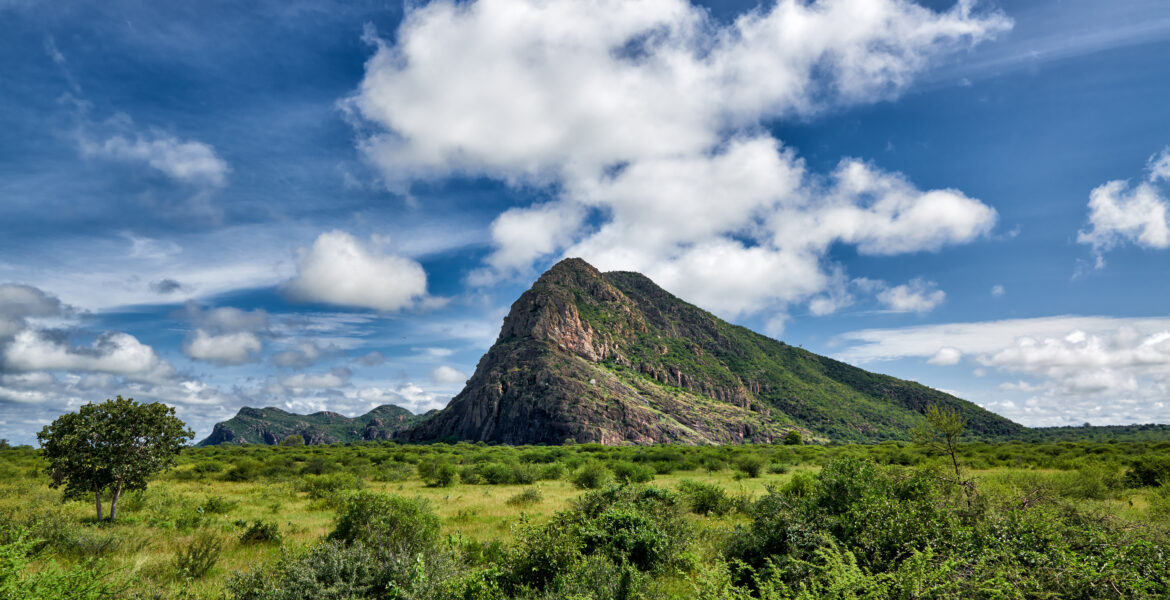From the mystery of rock paintings of Tsodilo Hills to silent waterways and papyrus swamps in the delta, Botswana’s Okavango Panhandle deserves to be ticked off your bucket list of prime destinations to reach, writes GOSEGO MOTSUMI
The travelling season is upon us and, having spent my entire life in the capital city of Gaborone, it was time for a change of scene and experience a place off the beaten track. After this year’s Botswana Travel and Tourism Expo in the resort town of Kasane that is also the headquarters of the Chobe District, a cohort of journalists flew from Kasane to the small village of Nxamaseri in the Okavango Panhandle where adventure awaited them.
Tsodilo Hills
The first excursion on arrival was to explore the Tsodilo Hills located 40 kilometres from Nxamaseri village. The hills, which are a UNESCO World Heritage Site, are home to the San people’s ancient art with over 4 500 paintings on 500 different sites.
With an option to use the road to the site, we connected by helicopter from the Shakawe air strip and five minutes into the trip lonely crests of the Tsodilo Hills rose dramatically ahead to welcome us to the “sacred place of the gods”.
We flew over them, taking in the brilliant streaks of mauve, turquoise and lavender in the rocks before landing nearby to go on the Rhino Trail.
Rhino trail
The largest hill is known as the Male, the next in size down is the Female, and then the Child. Our guide, Thebe, who is a native of Nxamaseri, explained that the hills have signs of early life from as far back as 100 000 years and are the spiritual sanctuary of the BaSarwa for whom they immense symbolism. The best rock art sites are on the Rhino Track which treks to the northern end of the Female hill. We spent some hours trekking, observing, learning and otherwise experiencing the shrine. At one point we could hear a hodgepodge of sounds that Thebe dismissed as echoes of the wind in turns whistling and roaring through the rocks. Even so, I could have sworn I heard people’s voices and roars of lions in turns.
“When you walk these sacred grounds, you can never be attacked by any sickness,” Thebe said matter-of-factly. His statement felt surreal as my usual dizzying anemic attacks were nowhere near troubling me and I managed to complete the rhino trail and was ready to take on the longer Lion Trail feeling as fit as a fiddle.
Affordable excursion
The rocks have mysteriously carved out the map of Botswana and the African continent. The San have used the rocks as a canvas to draw animals such as rhino, giraffe, elephants and even penguins that seem to be fading away. The guide explained that the San used blood, limestone, bone marrow, honey and ostrich egg to draw the paintings. “They were about to fade when more people began to roam around the area but we are now preserving the place and the paintings will stay intact,” said Thebe.
This is Botswana’s first world heritage site and Batswana are encouraged to visit the area as the excursions are more affordable. “We are creating a tented lodge,” our guide, a wellspring of information, told us. “We have a campsite and cultural showcase by BaSarwa. The Rhino Trail is P120, the Lion Trail P175. Entrance into the area is P10 for locals.”
Nxamaseri Island Lodge
Nestled under jackalberry trees and wild date palms on a tiny private island that lies between Tsodilo Hills and the Okavango Delta is the Nxamaseri Island Lodge. With African print and wooden furniture aesthetic, the rooms are elevated above the Nxamaseri water channel and interconnected with raised wooden walkways.
The staff are warm and welcoming to prioritise our comfort throughout our stay. I felt immersed in my surroundings as I lay in bed at night listening to the sound of birds and monkeys in the trees nearby. But days start early in this part of the world in order for one to catch up on the festivities of the ecosystem.
Mokoro rides
Bright and early, the first experience offered was a ride in the traditional dugout canoe or mokoro. To the natives, the mokoro ride is the most common mode of transport as some were spotted harvesting matlhaka, river reed used as building material for homes, along the crocodile-infested Nxamaseri water channel. For adventure seekers, the mokoro offered an immersive experience as the canoe glided though the clear water that is home to water lilies, dragon flies, basks of crocodiles and birds in their flocks.
Boat cruise
For an evening excursion we headed out on the Nxamaseri water channel as the area is well known for excellent bird watching. The Okavango Delta looks somewhat like a frying pan, with the main river flowing down the ‘handle’ before fanning out into the delta, the ‘pan,’ as it were, hence the ‘panhandle.’
It was in this ‘handle’ that we were boating under the watchful eye of a Fish Eagle perched high on a tree. From the Jacanna (Jesus bird), the King Fisher and the African Schemer, this water channel is home to numerous resident and migratory birds.
The boat cruise joins the Okavango River from the Nxamaseri channel where we found a spot to enjoy the sunset with a sundowner in hand before heading back to camp. However, the Okavango Panhandle is not the place to come for a traditional game viewing safari but there are still areas of unspoilt wetlands waiting to be explored.

